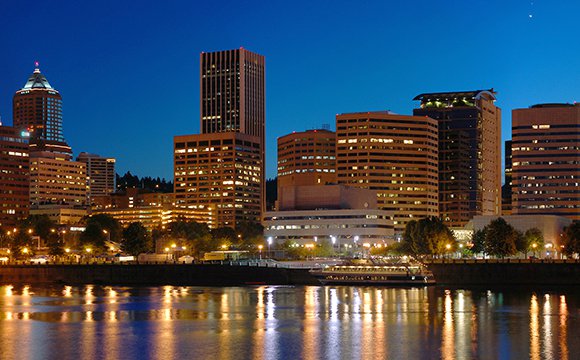Survey: 2019 Energy Efficiency Improvements Would Power 158,000 Northwest Homes
- September 16, 2020
- John Harrison

The Northwest achieved 217 average megawatts of energy efficiency in 2019, an amount roughly equal to the annual electricity use of 158,400 Northwest homes, results of an annual survey show. The 2019 accomplishments bring the total energy efficiency improvements in the Northwest since 1978, when efficiency programs began, to 7,000 average megawatts. Expressed as electricity generation, 7,000 average megawatts is:
- Roughly 20 percent of the region’s total generating capability
- About 2.6 times the average annual output of Grand Coulee Dam
- Approximately 2.5 times the average annual output of the region’s wind power plants
An average megawatt is a measure of electricity generation equal to 8,760,000 kilowatt-hours, enough to power approximately 730 average Northwest homes.
The survey of electric utilities, the Bonneville Power Administration, Energy Trust of Oregon, and the Northwest Energy Efficiency Alliance (NEEA) is conducted annually by the Regional Technical Forum. The Forum is a technical advisory committee to the Northwest Power and Conservation Council that develops standards to verify and evaluate energy efficiency savings. The Council’s power planning staff reported the 2019 survey results at the Council’s September meeting.
The annual survey enumerates savings achieved in several ways, including efficiency programs run by utilities and the Energy Trust of Oregon; NEEA Alliance savings that go beyond program achievements; savings from enhancements in building codes and standards (local, state, and federal); and other tracked efficiency from consumer purchases outside of programs.
An important factor in regional energy efficiency achievements is the work of NEEA, a collaborative organization of 140 utilities and efficiency organizations that works to make energy-efficient products available to consumers. NEEA’s achievements in 2019 totaled 63 average megawatts, and most of those savings were in residential lighting.
The Council’s 20-year Northwest Power Plan, revised every five years, includes six-year, 10-year, and 20-year goals for energy efficiency. The annual surveys help the Council assess progress toward the goals. Through 2019, the first four years of the current plan, the region achieved 857 average megawatts of efficiency, slightly ahead of plan milestones of 830 average megawatts. The six-year regional goal is 1,400 average megawatts.
Savings attributable to Bonneville customer utilities for the four-year period 2016-2019 total 274 average megawatts, currently tracking short of achieving their planned six-year regional goal. Energy efficiency requirements in Washington state are a big driver of Bonneville’s achievements to date, the Council staff reported.
The 2019 survey shows that savings from utility programs have declined each year since 2016 and that these savings are forecasted to continue to decline in 2020 and 2021. While utilities are typically good at forecasting savings, the forecasts for 2020 are uncertain due to the COVID-19 pandemic. Efficiency programs have needed to evolve to incorporate social distancing practices, resulting in a slow down to some projects, while shifting focus to other opportunities.
It is too early to tell whether the six-year goal will be achieved due to trends in program savings and delay in reporting of broader market efficiency, the staff reported. Reaching the six-year milestone will require tapping into several important areas that still have plenty of cost-effective potential, including residential heating and cooling, water heating, and electronics.


